
The Business of Fashion
Agenda-setting intelligence, analysis and advice for the global fashion community.

Agenda-setting intelligence, analysis and advice for the global fashion community.
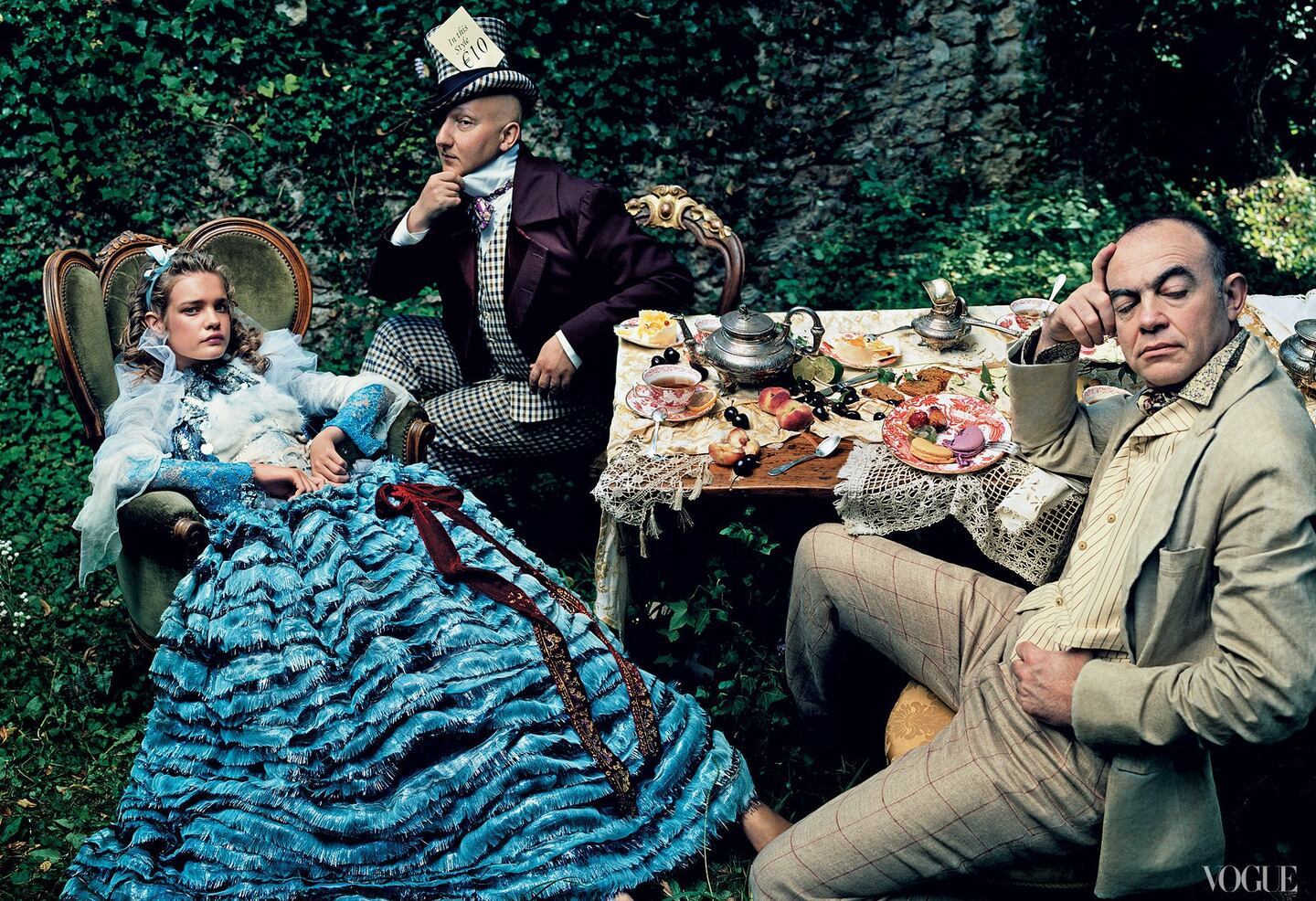
LONDON, United Kingdom — The making of fashion books for the Christmas market has become a serious business for the publishing industry, no doubt targeting shoppers increasingly desperate to find presents for kids, wives and husbands (not to mention boyfriends and girlfriends) that will interest them, have “cool factor” and not cost too much money. But all too often, the books on offer are potboilers with no real interest in them and no authority about them.
The mini-industry churning out Alexander McQueen books is particularly guilty. This Christmas, I have been sent three McQueen books to consider for review. One is a book of rather banal black-and-white pictures and a minimal text of stupefying affectation. The other two are little more than brightly coloured roundups of the designer's greatest collections. None of them is sanctioned by the McQueen company and one even says on the cover that it is unofficial and unauthorised; in other words, of no use to any reader.
The fashion tomes that I have chosen below have, in my opinion, the kind of authority and quality level that readers have a right to expect. And by quality, I don’t mean only the images (normally very high) but the words, as well. Some are so visually stunning that the images stay in one’s mind long after the book has been closed. But importantly, all the books below are also actually worth reading!
I hope you enjoy them.
ADVERTISEMENT
VOGUE: THE EDITOR’S EYE (ABRAMS)

Carmel Snow, the legendary editor-in-chief of
Harper’s Bazaar
(US) during in the first part of the twentieth century, once said: “What the photographer wants, the photographer gets.” Isabella Blow put it just as starkly when she told me that “fashion editors and stylists are nothing more than trolly dollies, fetching and carrying for the photographer.” Nonetheless, this sumptuous book, edited by Eve MacSweeney, with a well researched introduction by Hamish Bowles and some of the best fashion images ever created, focuses on the work of American
Vogue
’s top fashion editors. And it is surely proof that, whatever the role and position of the stylist might be, depending on the individual chemistry between her team and the photographers she works with, her personality as a creative chameleon is an essential ingredient of any successful shoot.
On another track, the images in this book force certain conclusions about fashion photography and its development over the last sixty-odd years. Black-and-white still works best artistically, as do shots of a single model. Elegance still beats sexiness. Modern stylists and photographers prioritise telling a beautiful and arresting story above clearly showing the actual garment. Action shots may be fun, but rarely, if ever, show the clothes properly. And, perhaps most clearly: Penn and Avedon were simply the best and are still without rival. This is a book to savour, enjoy and frequently refer to.
W: THE FIRST 40 YEARS (ABRAMS)
ADVERTISEMENT
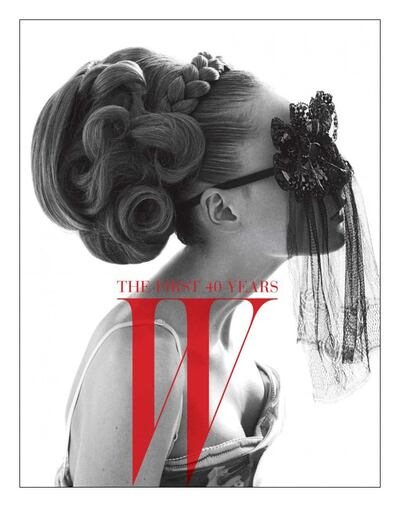
Compared with
Vogue
and
Harper’s Bazaar
, both of which have been going for well over a hundred years,
W
magazine, founded in 1972, is very much an upstart. And it shows its youth with a pert cheekiness that is very endearing. Its founder, John B. Fairchild, was (and probably still is) a mischievous, exuberant Til Eulenspiegel of a man, with an eye and imagination easily engaged by the many pomposities and posturings of the fashion world (and surely in love with that world) but in no way fooled into accepting fashion’s own estimation of itself. This is why
W
ADVERTISEMENT
has always been more imaginative, witty and outrageous that the two old ladies of American fashion, both in words and pictures. Its legendary gossip columnists, known as “Suzy” (who cast her sardonic eye over every important society bash in the 70s and 80s) and “Countess Louise J. Esterhazy” (reputed to be Fairchild himself) were must reads; way beyond anything
Vogue
or
Harper’s
, both in awe of hereditarily privileged and the super rich, would have ever dared. Even
W
’s photographs are less fashion and more fun and fantastical. Like Fairchild himself, the readers of
W
were like little children with their noses firmly pressed against the window called Wasp America, but the drapes were always drawn. And that is why
W
still does not entirely conform to the rules of safe taste in its pictures or copy. Looking at this handsome book, you will get the strong impression that
W
still has many attributes of the new kid on the fashion block — with one exception. It carries its own authority and, rightly, doesn’t care that
Vogue
and
Harper’s
probably consider it a little too ‘new money.’ But that is why it has survived for forty years and probably will do so until fashion and society magazines no longer exist.
GRACE: A MEMOIR (CHATTO & WINDUS)

At first glance, the title of this book (a memoir? Oh, please! We’re not thinking Madam de Maintenon or even Fanny Burney here), eye-searingly bright orange dust jacket and picture of the author having a Dorothy Lamour sarong-and-hibiscus moment did not inspire confidence. Neither did the fact that there was no index, a must for a book of this kind with multiple references to many characters. But then I brightened, seeing that Michael Roberts, a long-time close friend of the author’s, had given her a hand. He’s one of the very best writers on fashion and the Roberts influence is clear here. Coddington works for American
Vogue
and laboured there for years, almost anonymously, until the film
The September Issue
was released. Then came instant stardom. Hence, this memoir. Now, the life of a stylist is rarely serious, although taken very seriously indeed by the stylist herself. But this book is saved from pretentiousness or self-regard (although it does have enough of both to make us realise that our Grace has quite a healthy opinion of her position in fashion) by a genuine freshness, even at times gaucherie, and a degree of self-mockery. To my surprise, I found it an interesting and engaging read and would recommend it to anyone just starting in the fashion business and, indeed, even those already in the business and hoping to be the next styling diva.
POWER AND STYLE: A WORLD HISTORY OF POLITICS AND DRESS (FLAMMARION)
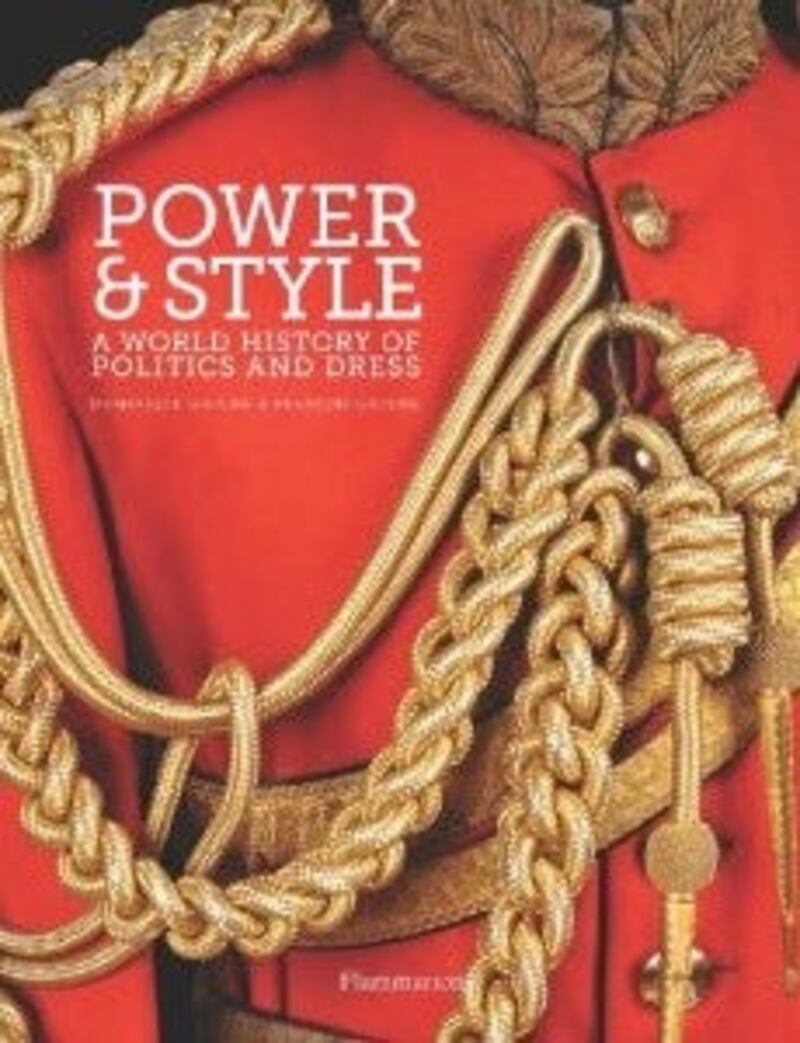
Although not entirely living up to its sweeping title, this is a lovely book, produced to the highest standards. It addresses the importance of ceremonial dress, panoply and regalia in the power and politics of clothing. Its remit is wide, from the earliest civilisations that grew up along the banks of the Nile and Indus rivers to the diplomatic dress adopted in across countries for formal international political occasions, right up to the dress worn by Beefeaters during the British Queen’s recent Diamond Jubilee celebrations.
Power and Style
is more about glamour than scholarship, but that does not mean that it is not full of interesting insights into the way the political and social movers and shakers have, over the centuries, clothed their bodies (and those of their servants and retainers) in order to articulate their power. For those wishing to go deeper, there are very good chapter notes and an excellent and eclectic bibliography. This is a great book to dip into and contains many happy revelations, whether the subject is the soldier kings of Europe in the eighteenth century and their obsession with
or the Americanisation of style in the twentieth century and today. I suspect the wide-ranging illustrations will make many regret the casualisation of dress for even significant events, in our time. Indeed, playing ‘dress up’ is now almost entirely confined to the monarchy and the church. We everyday folk seem to have missed out somewhere along the line.
IMPRESSIONISM, FASHION AND MODERNITY (YALE)
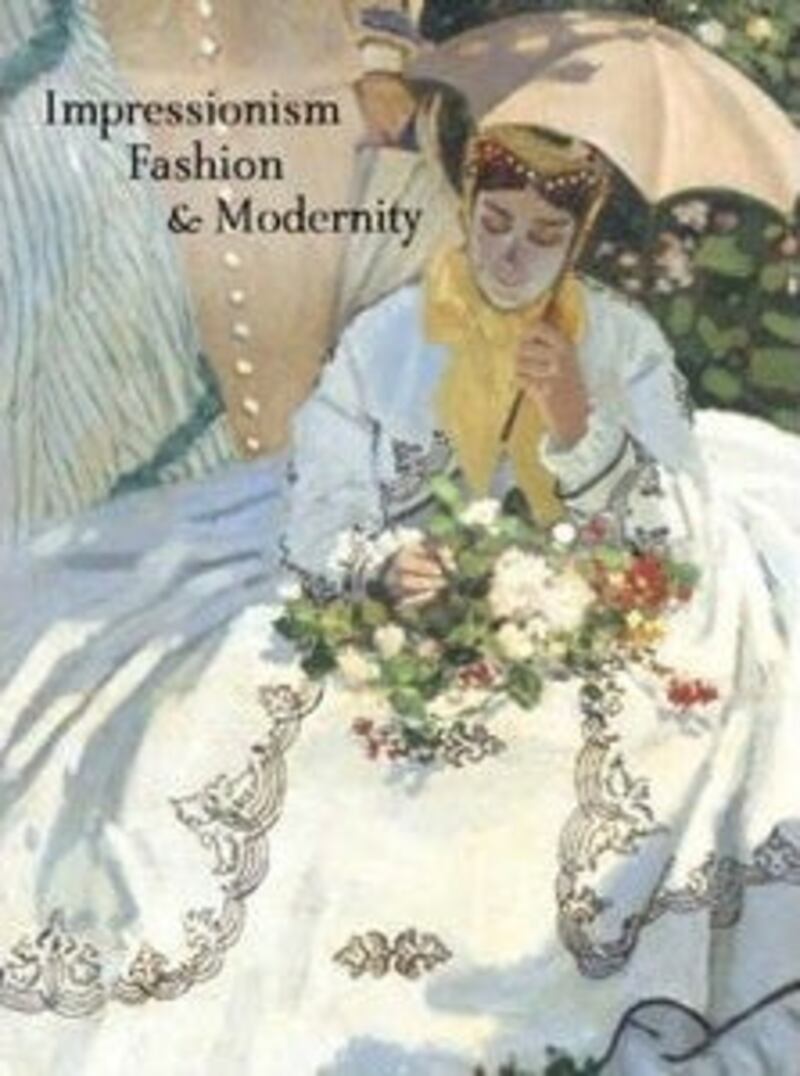
An exceptionally well-researched survey of fashion as a vital aspect of modern society, starting with the mid-nineteenth century in Paris, this book is the catalogue of an exhibition currently at the Musée d’Orsay in Paris (until January 20, 2013) and subsequently at The Metropolitan Museum of Art, New York (February 26 – May 27) and The Art Institute of Chicago (June 26 – September 22). As with most books on dress published by Yale, the scholarship is beyond question and the reproductions are of the highest quality. This volume contains essays by the exhibition’s curators, supplemented by writings by a veritable roll call of the best scholars working in the field of fashion studies in the world today. But don’t be put off by the words ‘scholars’ or ‘essays.’
Impressionism, Fashion and Modernity
is a plum-pudding of a book, stuffed with deeply researched information and fascinating little anecdotes of fashion, shopping and middle-class life in fin de siècle Paris, always linked to the revolutionary art of the Impressionists who chronicled everyday life around them. The starting point for the investigations is over 140 Impressionist paintings that are closely linked with the new modernity of fashion during the sixty year period the book covers. Add analysis of the development of fashion shopping, the rise of ready-to-wear, the growth of fashion magazines and the development of middle-class stylishness and you have an engrossing and informative read that will fascinate on many different levels. This is fashion history as it should be addressed.
TIM WALKER: STORY TELLER (THAMES AND HUDSON)
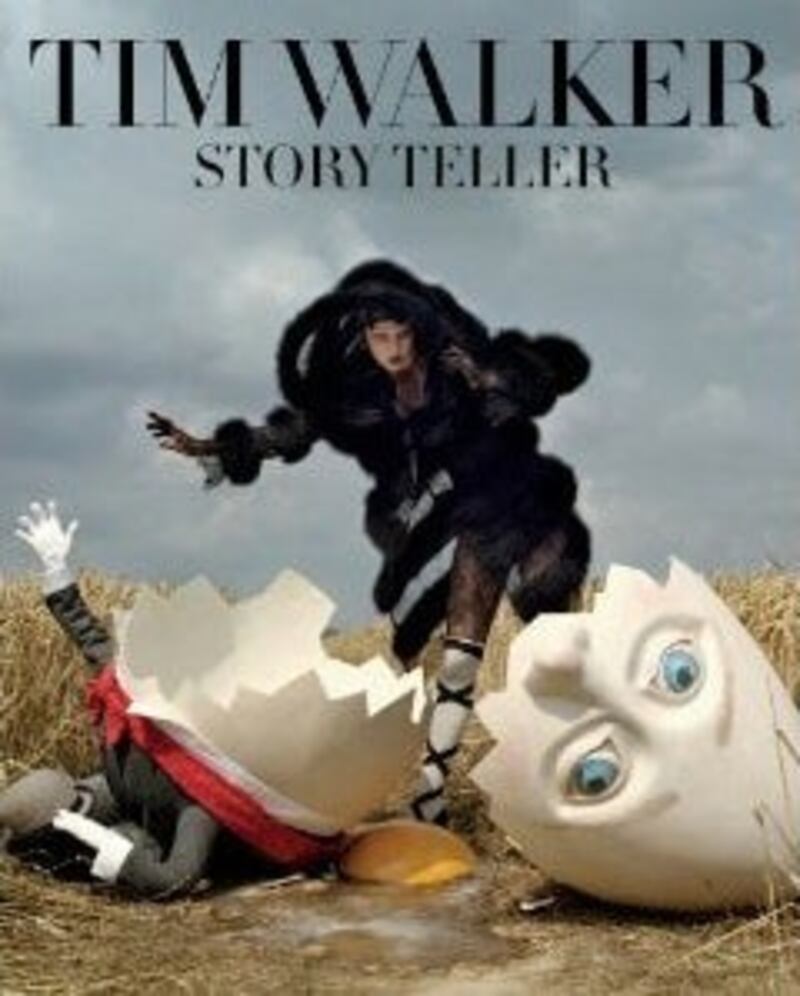
Fashion photographers with a completely original approach are rare. Those who have such an approach and manage to make it commercial, without weakening it are even rarer. In modern times, I can think of only a few:
, Bruce Weber,
, Deborah Turbeville and, currently pre-eminent in my view,
.
Story Teller
follows Walker’s 2008 book,
Pictures
and it continues the themes he has made his own: fairytales and fantasy, destroying perspective and distorting scale, blazing light and dysfunctional figures, all done with a most invigorating ‘Through the Looking Glass’ insouciance. In fact, as we turn the pages of
Story Teller
, we begin to get the slightly unnerving feeling that it is his images and not us that are reality, just as in the work of the Swiss nineteenth century artist and mystic Fuseli or the Victorian English painter Richard Dadd. Walker’s approach has much in common with both, except that where Fuseli and Dadd used sombre, dark colours, Tim Walker’s world has all the lightness and brightness of a nursery school, with brilliant light flooding through its windows, which at first glance, makes his message seem innocent. But it is not, of course, and that makes it even more riveting. The exhibition of Walker’s work at London’s Somerset House continues until January 27, 2013 and, like this book, is well worth discovering.
HOLLYWOOD SKETCHBOOK (HARPER DESIGN)
In the heyday of the Hollywood studio system, megaliths like Columbia, Universal, Warner Brothers, Paramount and 20th Century Fox gobbled up talent at a huge rate, turning out films on a weekly basis to feed the vast appetites of movie-goers across the globe. We all know the names of the actors and even the directors from that golden era, but there is one area of the Hollywood legend that, although employing thousands, has until now been largely ignored, despite its crucial importance to making any film: costume design. Hollywood Sketchbook reveals this forgotten field. Most people interested in fashion have heard of designers such as Adrian, Walter Plunkett and Edith Head, who designed the costumes worn, often off- as well as on-screen, by the top box office stars. But the thing that will surprise many is the fact that a great number of the most talented designers were simply not good at drawing their ideas and the studios were forced to employ sketchers to communicate these ideas to directors, stars, technicians and costume departments. It is these forgotten talents that
Hollywood Sketchbook
highlights. This book very usefully fills a gap in the history of movies and television and should be in the reference library of every college where fashion and film are studied.
UMAN: THE ESSAYS (SKIRA)
This series of ten small hardback books is written by various hands, including those of the popular historian Nick Foulkes; fashion director of
Esquire
(US), Nick Sullivan; the
Newsweek
Paris bureau chief Christopher Dickey; and Sir Roy Strong. Each volume consists of an essay on one item of male dress and the traditions and ethos behind it, a spread of pictures and some rather fancy typography, all wrapped in a white cover with a front and back image by the fashion illustrator Francois Berthoud. I think this series is delightful, not least because it flies in the face of conventional wisdom concerning fashion books. All the volumes are easily lifted and held because they are meant to actually be read! They are not filled with garish colour photography and they do not cost a fortune. What’s not to like? Either individually or in a set of ten, these would be perfect stocking fillers for young men just beginning to learn about dress, or old men who think they are past the point of taking interest.
Colin McDowell is a contributing editor at The Business of Fashion
From analysis of the global fashion and beauty industries to career and personal advice, BoF’s founder and CEO, Imran Amed, will be answering your questions on Sunday, February 18, 2024 during London Fashion Week.
The State of Fashion 2024 breaks down the 10 themes that will define the industry in the year ahead.
Imran Amed reviews the most important fashion stories of the year and shares his predictions on what this means for the industry in 2024.
After three days of inspiring talks, guests closed out BoF’s gathering for big thinkers with a black tie gala followed by an intimate performance from Rita Ora — guest starring Billy Porter.